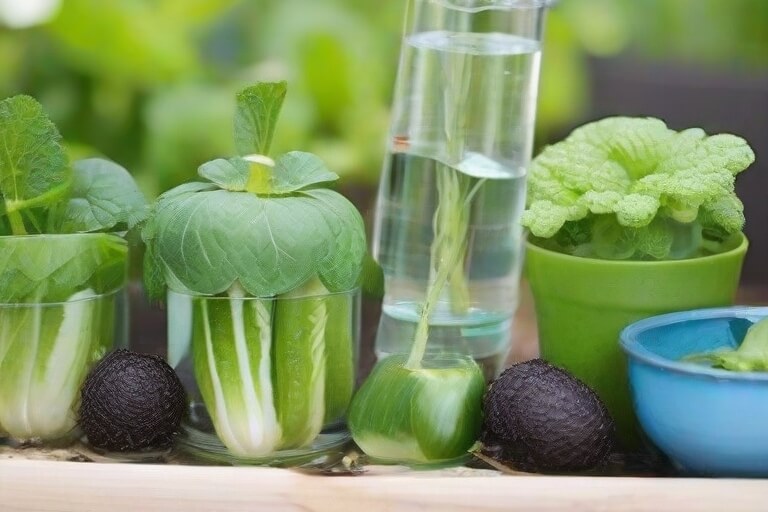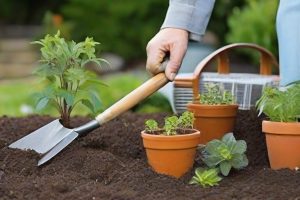Not all gardening articles assume that everyone has access to abundant nutritious soil and ample space for plants. This particular article acknowledges the challenges faced by those living in cities where such resources may be scarce. However, there is good news. Certain vegetables have the ability to regenerate using just water and sunlight.
The concept behind regrowing vegetable scraps in water is straightforward. Plants are naturally designed to derive energy from the sun and nutrients from the soil. While a small glass or dish of water may not offer the same level of nutrients as rich soil, plants can still utilize it to produce fresh and delicious shoots or roots that are ready for transplantation.
Plants that will grow shoots
Plants that can produce new shoots can be easily regrown by placing their inedible base in water. To achieve optimal results, it is recommended to position these stumps on a sunny windowsill and regularly change the water.
Lettuce and cabbage
Typically, the tough white chunk at the base of a head of cabbage or lettuce is discarded after removing the leaves for a salad. However, by placing this part in water, new leaves can be encouraged to grow. Place it in a wide mug or shallow bowl with an inch or two of water, ensuring that the leaf side is facing up, and monitor it regularly to prevent sliminess. Within a week or two, new baby leaves should start sprouting from the center of the stump. Although the homegrown head may not regain its full leafy glory, this method can be useful for growing garnishes or supplementing larger dishes.
Celery and leeks
Many stores and markets sell celery and leeks with their bases still intact, often with small white roots already visible. This makes regrowing these vegetables incredibly simple: just prop the bases up in a small glass with about an inch of water at the bottom and wait for new stalks to emerge. Remember to refill the water when it becomes low, but avoid submerging too much of the base to prevent overwatering. The new sprouts may be thinner than the original ones, but even a small amount of these crunchy crops can enhance the flavor of various dishes.
Garlic and green onions
Although garlic or onion bulbs cannot be regenerated without soil, these aromatic plants can produce flavorful green shoots in water alone. Place a single garlic clove in a small cup of water, suspending it with toothpicks so that the bottom is submerged but the top remains above water. Follow the same process with the bottom few inches of a green onion or scallion. Within a few days, you should observe signs of green growth emerging. You can harvest these scallions and garlic shoots, known as scapes, using regular kitchen scissors, and continue watering them to promote further growth.
Plants that can develop roots
Suppose you have access to a pot or two of soil but lack the patience or expertise to grow vegetables from seeds. The good news is that water and sunlight can also facilitate the growth of vegetable scraps from your kitchen, allowing them to develop roots that will sustain the larger plant in soil. Begin by cultivating these robust and healthy roots in water, and then proceed to transplant the vegetable into some quality soil.
Herbs
Regrowing an entire plant from just a single sprig of cilantro, thyme, basil, or any other herb is entirely possible. The next time you use your favorite herb in the kitchen, set aside a healthy shoot with a few leaves growing on it. The stem below the lowest leaf should be a few inches long. To encourage growth, use a toothpick or a bent paperclip to suspend this sprig in a small glass of water. Ensure that the bottom of the stem is submerged while keeping the leaves dry. In due time, you will witness the emergence of roots underwater. Once the roots exceed an inch in length, transfer the mini plant to soil, ensuring that the previously submerged part is now covered in dirt. With consistent watering, exposure to sunlight, and patience, your small herb can flourish into a fully-grown plant.
Tubers
Similar to garlic and the aforementioned herbs, growing potatoes and their relatives, such as yams, requires a suspension system made of toothpicks or other materials. With the right setup, you can coax these tubers to sprout roots underwater while developing leaves in the air. Position a small piece with at least one eye facing upwards and out of the water. After a few weeks, you will observe growth on both ends of the chunk. Subsequently, bury these sprouted tubers in soil, ensuring that only the leaves are above ground. Over time, the plant will generate entirely new masses of roots that can be harvested and consumed the following year.
Ginger
Although the part of a ginger plant we commonly consume is referred to as a root, it is actually a different part of the plant known as a rhizome. Even a small piece of ginger can sprout both roots and greens, similar to potatoes. To initiate growth, partially suspend your ginger in water until roots and greens emerge.


